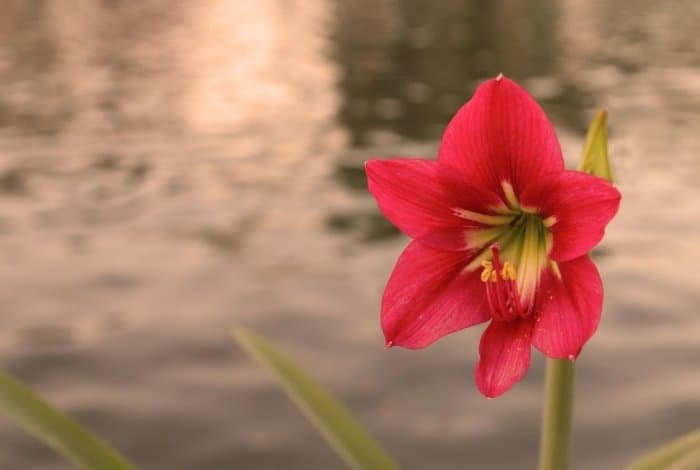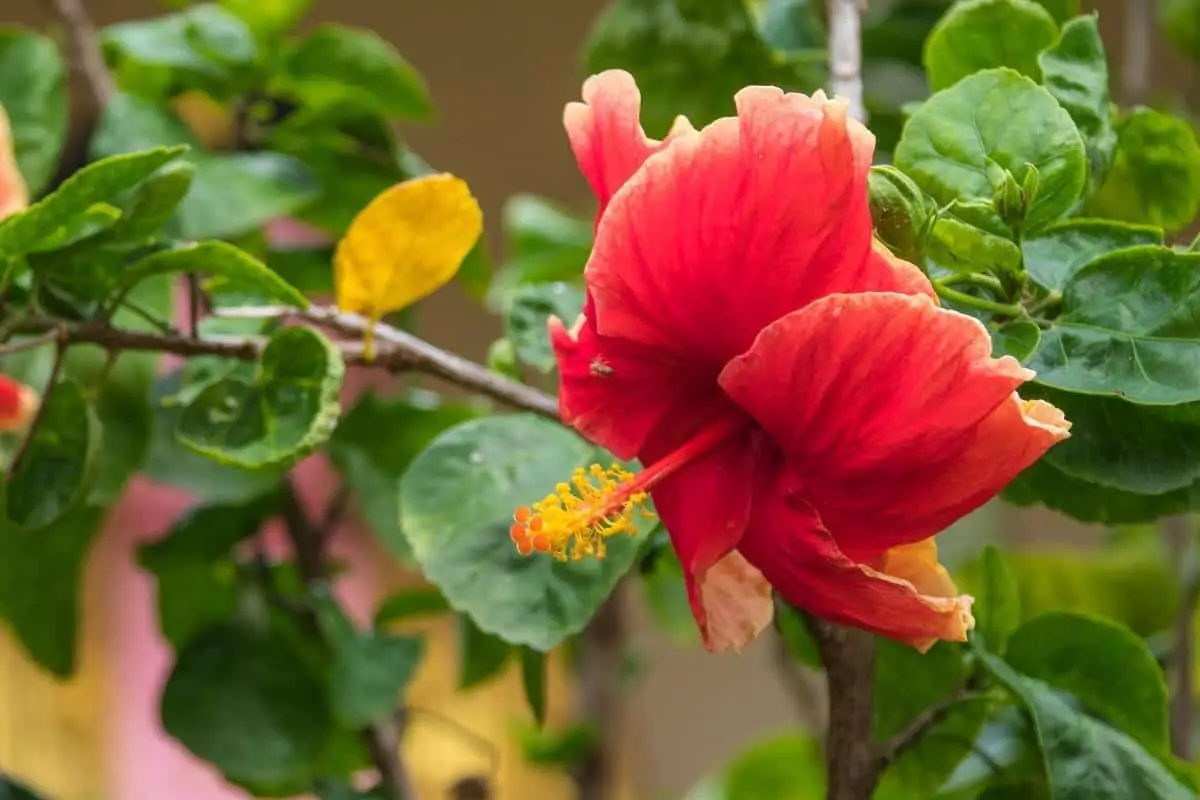Last Updated on January 19, 2022 by Tony Manhart
A very common problem most gardeners face while growing Hibiscus plants is hibiscus leaves turning yellow. There are a couple of reasons behind why do Hibiscus leaves turn yellow. Let’s take a look at these reasons and also discuss solutions to these issues.
Why Are My Hibiscus Leaves Turning Yellow? Reasons and Solutions
If your Hibiscus leaves are turning yellow, you don’t need to panic. It does not mean your plant will die. It’s just a call for attention from your Hibiscus plant.
Here are some of the reasons why Hibiscus leaves turn yellow:
- Overwatering: Most gardening problems are usually caused by overwatering. Overwatering Hibiscus and not watering enough can both predispose your Hibiscus leaves turning yellow. Therefore, it is crucial to water your Hibiscus plant correctly. Make use of containers with good drainage holes for the proper flow of water from the drainage holes. You should also use a loose soil that allows easy water flow as the Hibiscus plant does not like too wet soil. You should also consider the climate you are living in. During the rainy season, you can move your plant container indoors.

- Temperatures: During the hot season, your Hibiscus plant may begin to stress out and turn yellow. You may need to water twice daily as your plant needs a lot of water during this period. Your plant may dry up and die from too much heat if you fail to water accordingly.
- Winter: Freezing weather can stress your plant and the leaves of your plants may turn yellow and fall off. Keep your plant indoors when it’s freezing.
You should also shield your Hibiscus plant from the wind. Your leaves can turn yellow when you move your plant indoors during winter. Your plant begins to go into dormancy during this period. This is why you should place your Hibiscus plant in the right place.
- Right placing: Placing your Hibiscus plant in the right place is very important. Especially when you decide to keep them indoors. Place them close to the window where they can get direct morning sunlight and good shade.
- Fertilizers: Lack of fertilization or over-fertilization can make your Hibiscus leaves turning yellow. If the plant is over-fertilized, the leaves turn yellow and fall off.
If the leaves of your plant turn partially yellow and don’t fall off, then it could be due to a lack of essential nutrients. Supply your Hibiscus plant with the right dosage of fertilizers.
Bayer Advanced All in One Rose and Flower Care Granules
- Pest attacks: The colorful blooming Hibiscus flower can attract beneficial pollinators as well as non-beneficial insects. Pest insect infestation such as spider mites, Hibiscus aphids, scale insects, etc, can attack your Hibiscus plant. They can cause injury to your plant and cause your leaves to turn yellow and drop off.
Hibiscus Growing Season and Dormancy Period
The appropriate growing season for the Hibiscus plants in spring, summer, and fall.
Yellow leaves on the hibiscus plant may start to appear and drop off towards the end of autumn. If this happens, it implies that your plant wants to go into dormancy. Therefore, decrease the rate of watering and let your plant have some rest.
Take your Hibiscus plant indoors during the dormancy period and place your plant in a cool dark place for two months.
FAQs
How do I know if my hibiscus is overwatered?
It is important to know when your hibiscus is overwatered and when it needs water.
In order to know if your hibiscus is overwatered, look for these three signs:
1) The leaves are limp. They may be drooping or flat with no energy in them. This could mean that the plant has been overwatered, but this is not always the case. If the plant looks healthy and it's still not blooming, then chances are that its just too dry for your plant.
2) The leaves are browning around the edges. Browning around the edges of the leaves means that they have been getting too much direct sunlight and have not had enough liquid.
Why is my potted hibiscus leaves turning yellow?
A potted hibiscus plant has many factors that could be causing the leaves to turn yellow. Some of these include not enough sunlight, lack of water, and lack of nutrients.
Is vinegar good for hibiscus plants?
The answer to this question depends on the type of hibiscus plant you have. For instance, if you have a Hibiscus rosa-sinensis, vinegar is an effective way to kill spider mites and other pests.
Hibiscus plants are very susceptible to pest infestation. They need a lot of water and nutrients which they absorb from the soil. So it is important to maintain their health by keeping them free of pests and rot, which is sometimes caused by overwatering or too much fertilizer.
Vinegar has been used for years as a home remedy for cleaning plants because it has antifungal properties that help prevent fungal growth on surfaces like leaves and stems of the hibiscus plant.
How often do you have to water hibiscus?
Hibiscus plants are one of the easiest plants to grow indoors. They prefer moist soil, but you do not need to water them every day. If the potted plant is not in a pot with drainage holes, then you should water it about once per week or when the top inch of the potting mix becomes dry.
How do I keep my hibiscus blooming?
Some people have a hard time keeping their hibiscus alive. And while there are many reasons for this, there is a good chance the root of the problem is the water.
Watering your plant - Hibiscus like to be watered regularly and thoroughly, but not excessively. The soil should be moist and never dry. You should also avoid pouring water down the leaves of your plant as overwatering can lead to root rot and other fungal diseases. Hibiscus appreciate rainwater, but if it’s not an option you can use distilled or tap water with a little fertilizer added to it (once every three or four weeks).
The soil should be kept moist but not wet. There should be lots of humidity in the air and the plant should be sheltered from cold drafts. The plant's roots should also be kept cool by putting it in a pot that is filled with pebbles that have been soaked in water overnight.

Eunice is a gardener who loves to play in the dirt. She starts her day early in the morning, watering her plants and tending to her garden. She loves the smell of freshly cut grass and the feeling of sunshine on her back as she works. She‘s a master at creating beautiful flower arrangements and can often be found humming a tune as she tends to her plants. When she‘s not gardening, she loves to read books about nature and share her knowledge with others. Eunice loves gardening so much that she‘s even been known to talk to her plants!



